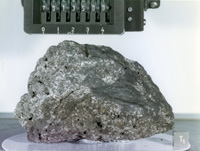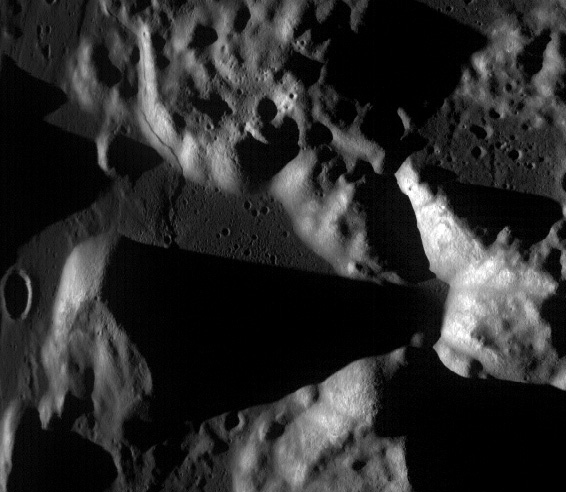Difference between revisions of "September 26, 2010"
| Line 1: | Line 1: | ||
__NOTOC__ | __NOTOC__ | ||
=Atlas of Treasure= | =Atlas of Treasure= | ||
| − | |||
<!-- ws:start:WikiTextHeadingRule:1:<h1> --> | <!-- ws:start:WikiTextHeadingRule:1:<h1> --> | ||
<!-- ws:start:WikiTextLocalImageRule:16:<img src="/file/view/LPOD-sept26-10.jpg/165409773/LPOD-sept26-10.jpg" alt="" title="" /> -->[[File:LPOD-sept26-10.jpg|LPOD-sept26-10.jpg]]<!-- ws:end:WikiTextLocalImageRule:16 --><br /> | <!-- ws:start:WikiTextLocalImageRule:16:<img src="/file/view/LPOD-sept26-10.jpg/165409773/LPOD-sept26-10.jpg" alt="" title="" /> -->[[File:LPOD-sept26-10.jpg|LPOD-sept26-10.jpg]]<!-- ws:end:WikiTextLocalImageRule:16 --><br /> | ||
| − | <em>Lunar thin-section image by [http://www.lpi.usra.edu/features/lunarSampleAtlas/ Lunar and Planetary Institute/NASA]</em><br /> | + | <em>Lunar thin-section image by [http://www.lpi.usra.edu/features/lunarSampleAtlas/" rel="nofollow Lunar and Planetary Institute/NASA]</em><br /> |
<br /> | <br /> | ||
| − | The [http://www.lpi.usra.edu/ Lunar and Planetary Institute] has recently this month put online over 5000 new images of the lunar rock samples from the data packs of information held on each Moon rock brought back by the Apollo astronauts and stored at the [http://curator.jsc.nasa.gov/lunar/index.cfm Lunar Curatorial Laboratory] in Houston, Texas. The [http://www.lpi.usra.edu/features/lunarSampleAtlas/ Lunar Sample Atlas] contains thin-section images, mugshots of the rocks and diagrams on how the samples were cut up for distribution. It is a treasure trove of beautiful images, such as the one above of a mare basalt [http://www.lpi.usra.edu/lunar/samples/atlas/detail/?mission=Apollo%2017&sample=70135 70135] collected on Apollo 17. The thin section shown is made from a 0.03 mm section of rock with crossed polarized light giving interference patterns which give the beautiful colors which enable mineral identification. By studying the minerals and the order in which they crystalized, the cooling history of the rock can be worked out. This with age dating and the context of where the sample was collected, can unlock the geologic history of that region of the Moon. Stratigraphic geology and petrology are considered separate fields, but the infomation gained by one can help the other in better understanding of lunar history and origin.<br /> | + | The [http://www.lpi.usra.edu/" rel="nofollow Lunar and Planetary Institute] has recently this month put online over 5000 new images of the lunar rock samples from the data packs of information held on each Moon rock brought back by the Apollo astronauts and stored at the [http://curator.jsc.nasa.gov/lunar/index.cfm" rel="nofollow Lunar Curatorial Laboratory] in Houston, Texas. The [http://www.lpi.usra.edu/features/lunarSampleAtlas/" rel="nofollow Lunar Sample Atlas] contains thin-section images, mugshots of the rocks and diagrams on how the samples were cut up for distribution. It is a treasure trove of beautiful images, such as the one above of a mare basalt [http://www.lpi.usra.edu/lunar/samples/atlas/detail/?mission=Apollo%2017&sample=70135" rel="nofollow 70135] collected on Apollo 17. The thin section shown is made from a 0.03 mm section of rock with crossed polarized light giving interference patterns which give the beautiful colors which enable mineral identification. By studying the minerals and the order in which they crystalized, the cooling history of the rock can be worked out. This with age dating and the context of where the sample was collected, can unlock the geologic history of that region of the Moon. Stratigraphic geology and petrology are considered separate fields, but the infomation gained by one can help the other in better understanding of lunar history and origin.<br /> |
<br /> | <br /> | ||
| − | If you would like to see what a lunar sample thin-section looks like through a microscope, the [http://www.open.ac.uk/ Open University] has a [http://www.open.ac.uk/planetarygeology/p12_3.shtml Virtual lunar petrographic microscope] where you can manipulate a thin section under the microscope yourself. <br /> | + | If you would like to see what a lunar sample thin-section looks like through a microscope, the [http://www.open.ac.uk/" rel="nofollow Open University] has a [http://www.open.ac.uk/planetarygeology/p12_3.shtml" rel="nofollow Virtual lunar petrographic microscope] where you can manipulate a thin section under the microscope yourself. <br /> |
<br /> | <br /> | ||
| − | [mailto:mauricejscollins@hotmail.com Maurice Collins]<br /> | + | [mailto:mauricejscollins@hotmail.com" rel="nofollow Maurice Collins]<br /> |
<br /> | <br /> | ||
<strong>Technical Details</strong><br /> | <strong>Technical Details</strong><br /> | ||
| Line 28: | Line 27: | ||
<br /> | <br /> | ||
<span style="font-weight: normal;"><strong>Related Links</strong></span><br /> | <span style="font-weight: normal;"><strong>Related Links</strong></span><br /> | ||
| − | [http://curator.jsc.nasa.gov/lunar/index.cfm Astromaterials Curation JSC]<br /> | + | [http://curator.jsc.nasa.gov/lunar/index.cfm" rel="nofollow Astromaterials Curation JSC]<br /> |
| − | [http://www.lpi.usra.edu/lunar/samples/atlas/ Lunar Sample Atlas]<br /> | + | [http://www.lpi.usra.edu/lunar/samples/atlas/" rel="nofollow Lunar Sample Atlas]<br /> |
Rükl plate [http://the-moon.wikispaces.com/R%C3%BCkl+25 25]<br /> | Rükl plate [http://the-moon.wikispaces.com/R%C3%BCkl+25 25]<br /> | ||
| − | Image: Taurus-Littrow Valley, the collecting site for the 70135 sample. WAC by [mailto:revans_01420@yahoo.com%20 Rick Evans]<br /> | + | Image: Taurus-Littrow Valley, the collecting site for the 70135 sample. WAC by [mailto:revans_01420@yahoo.com%20" rel="nofollow Rick Evans]<br /> |
<br /> | <br /> | ||
<hr /> | <hr /> | ||
| − | <div>You can support LPOD when you buy any book from Amazon thru [http://www.lpod.org/?page_id=591 LPOD!]<br /> | + | <div>You can support LPOD when you buy any book from Amazon thru [http://www.lpod.org/?page_id=591" rel="nofollow LPOD!]<br /> |
</div> | </div> | ||
| − | |||
---- | ---- | ||
===COMMENTS?=== | ===COMMENTS?=== | ||
Click on this icon [[image:PostIcon.jpg]] at the upper right to post a comment. | Click on this icon [[image:PostIcon.jpg]] at the upper right to post a comment. | ||
Revision as of 21:07, 4 January 2015
Atlas of Treasure

Lunar thin-section image by " rel="nofollow Lunar and Planetary Institute/NASA
The " rel="nofollow Lunar and Planetary Institute has recently this month put online over 5000 new images of the lunar rock samples from the data packs of information held on each Moon rock brought back by the Apollo astronauts and stored at the " rel="nofollow Lunar Curatorial Laboratory in Houston, Texas. The " rel="nofollow Lunar Sample Atlas contains thin-section images, mugshots of the rocks and diagrams on how the samples were cut up for distribution. It is a treasure trove of beautiful images, such as the one above of a mare basalt " rel="nofollow 70135 collected on Apollo 17. The thin section shown is made from a 0.03 mm section of rock with crossed polarized light giving interference patterns which give the beautiful colors which enable mineral identification. By studying the minerals and the order in which they crystalized, the cooling history of the rock can be worked out. This with age dating and the context of where the sample was collected, can unlock the geologic history of that region of the Moon. Stratigraphic geology and petrology are considered separate fields, but the infomation gained by one can help the other in better understanding of lunar history and origin.
If you would like to see what a lunar sample thin-section looks like through a microscope, the " rel="nofollow Open University has a " rel="nofollow Virtual lunar petrographic microscope where you can manipulate a thin section under the microscope yourself.
" rel="nofollow Maurice Collins
Technical Details


70,135 in lab after return from the Moon.
Mission: Apollo 17 - Taurus-Littrow
Sample: 70135
Split 66
Photo Number: JSC01439
Lithology: high-Ti mare basalt
Image Type: polarized light microscope image
Thin Section Type: standard thin section
Field of View: 2.85 mm
Magnification: 2.5x
Source: JSC
Related Links
" rel="nofollow Astromaterials Curation JSC
" rel="nofollow Lunar Sample Atlas
Rükl plate 25
Image: Taurus-Littrow Valley, the collecting site for the 70135 sample. WAC by " rel="nofollow Rick Evans
COMMENTS?
Click on this icon File:PostIcon.jpg at the upper right to post a comment.



